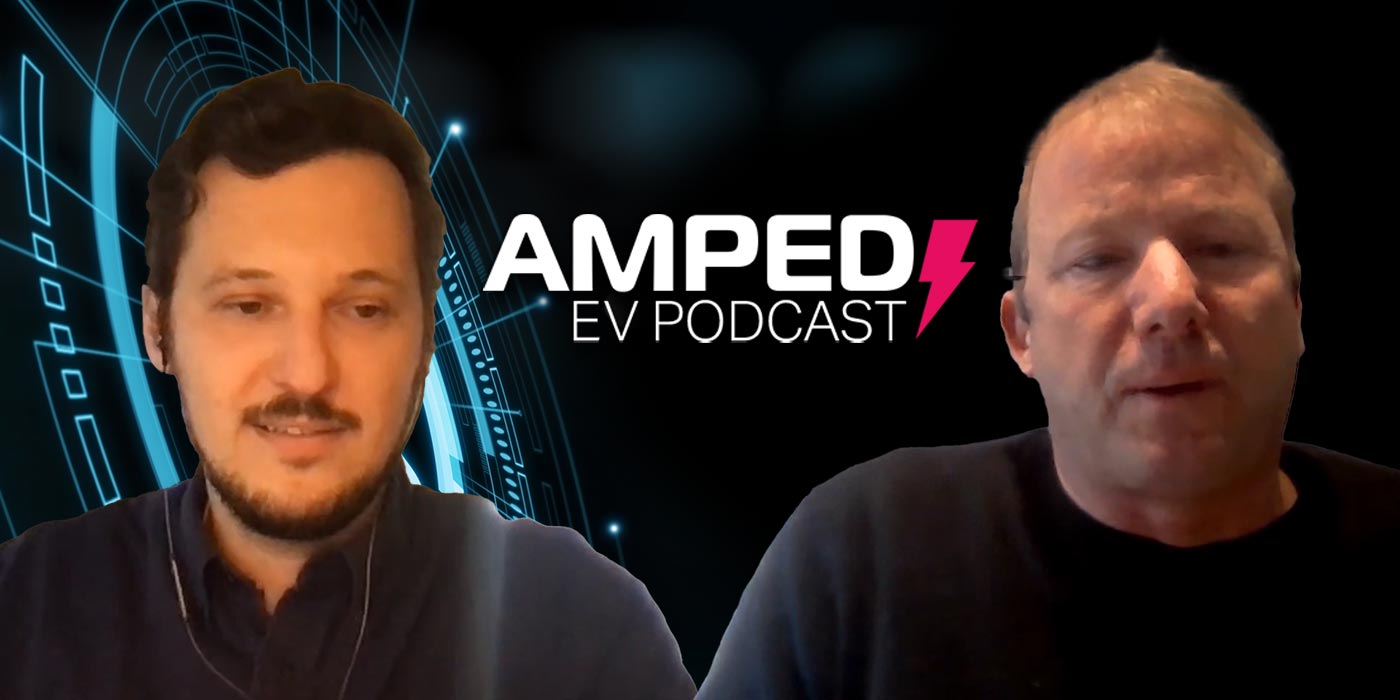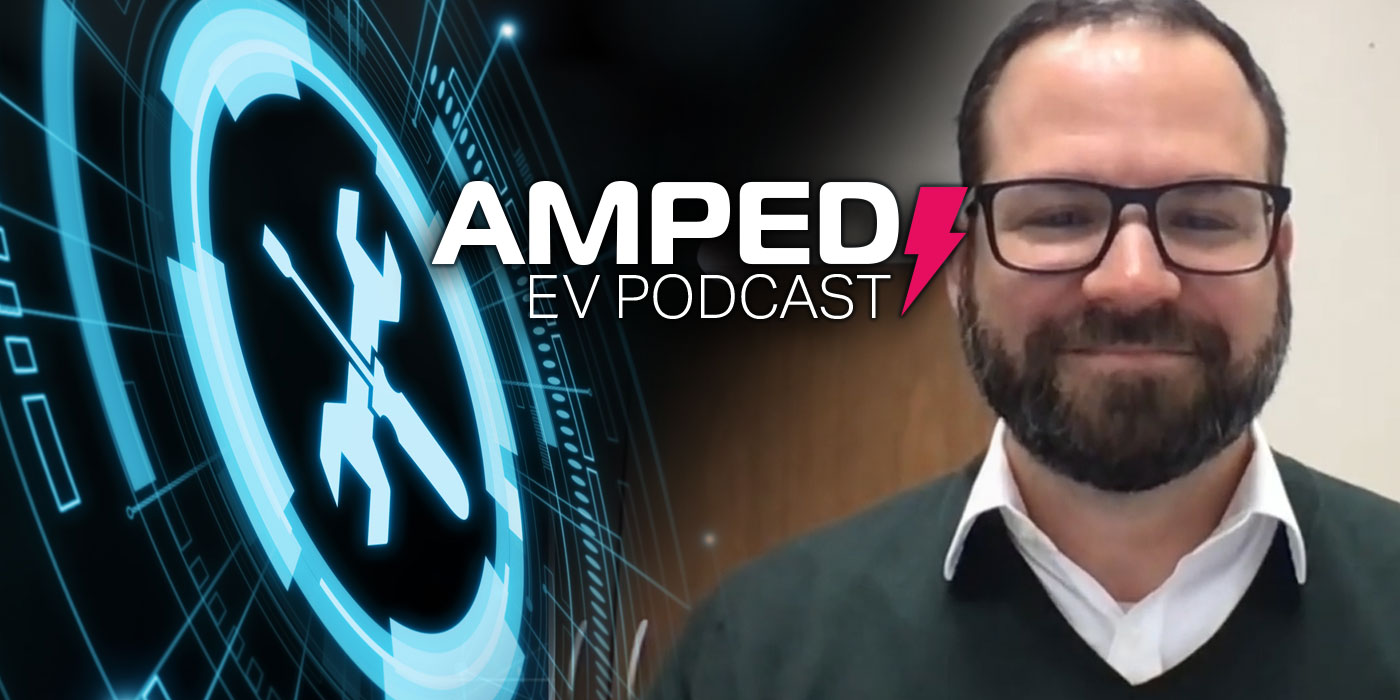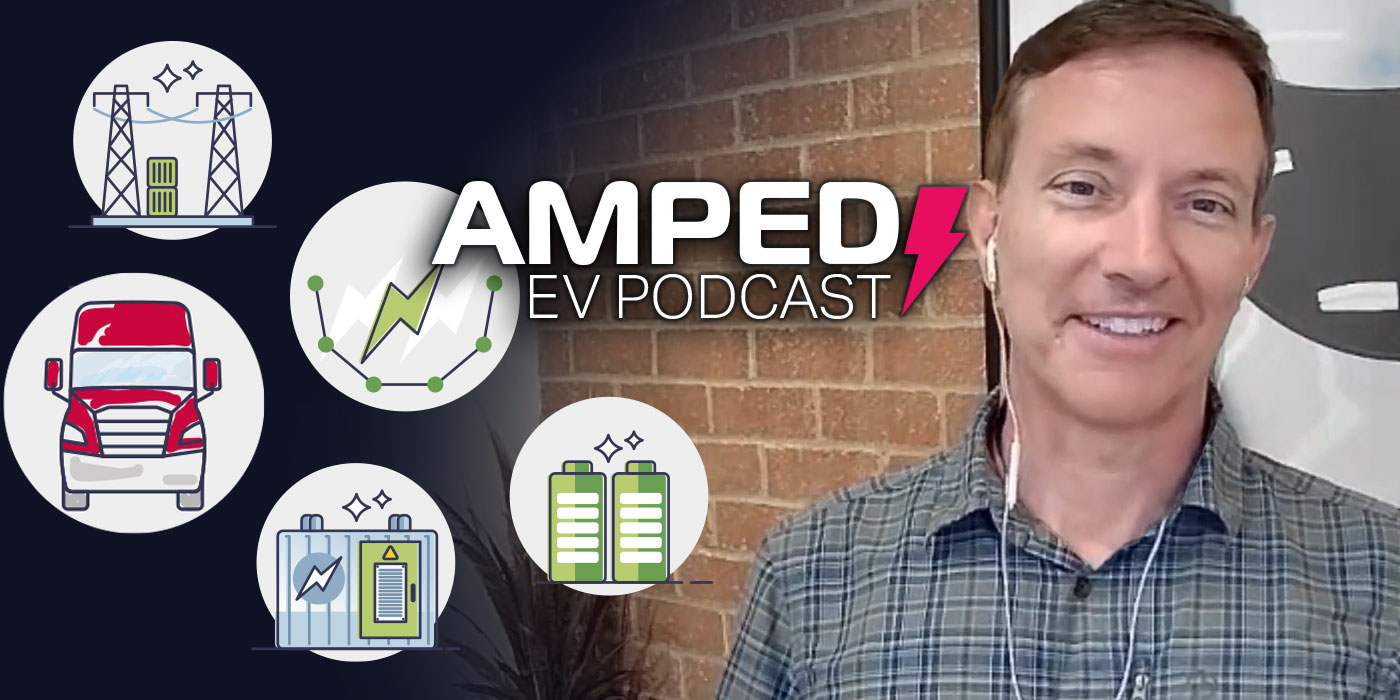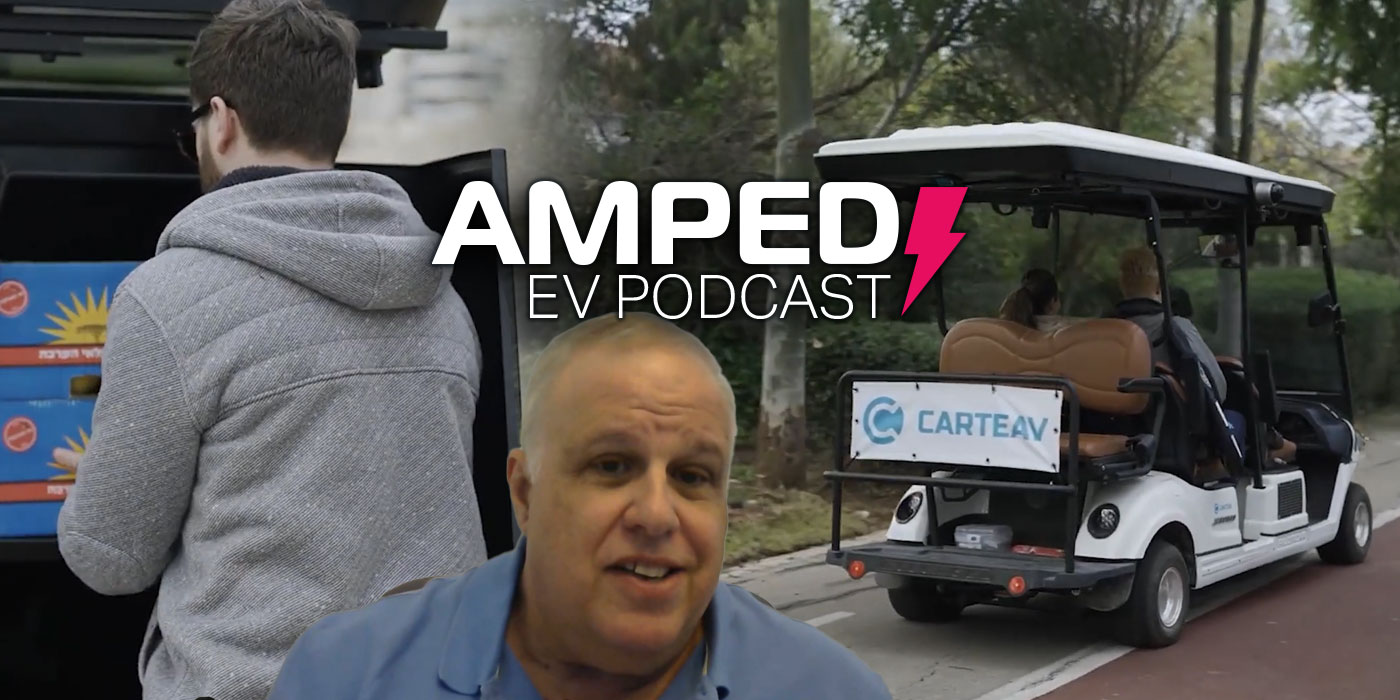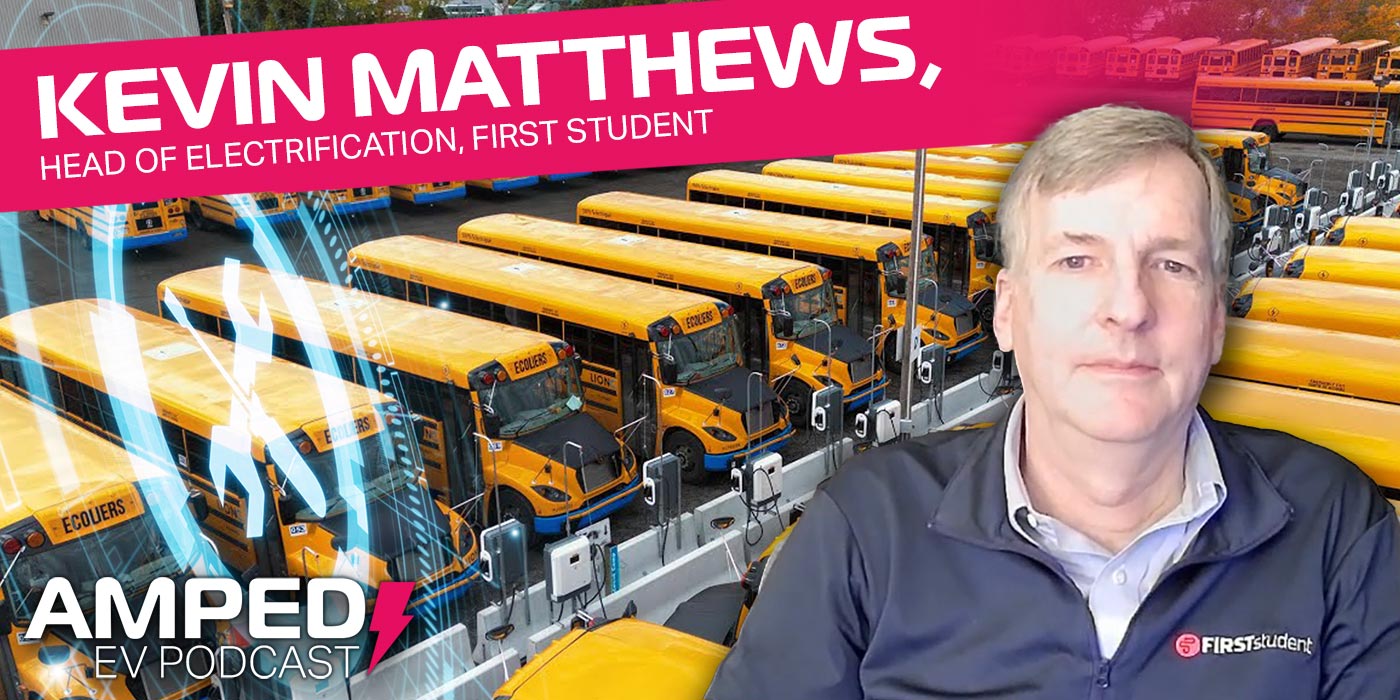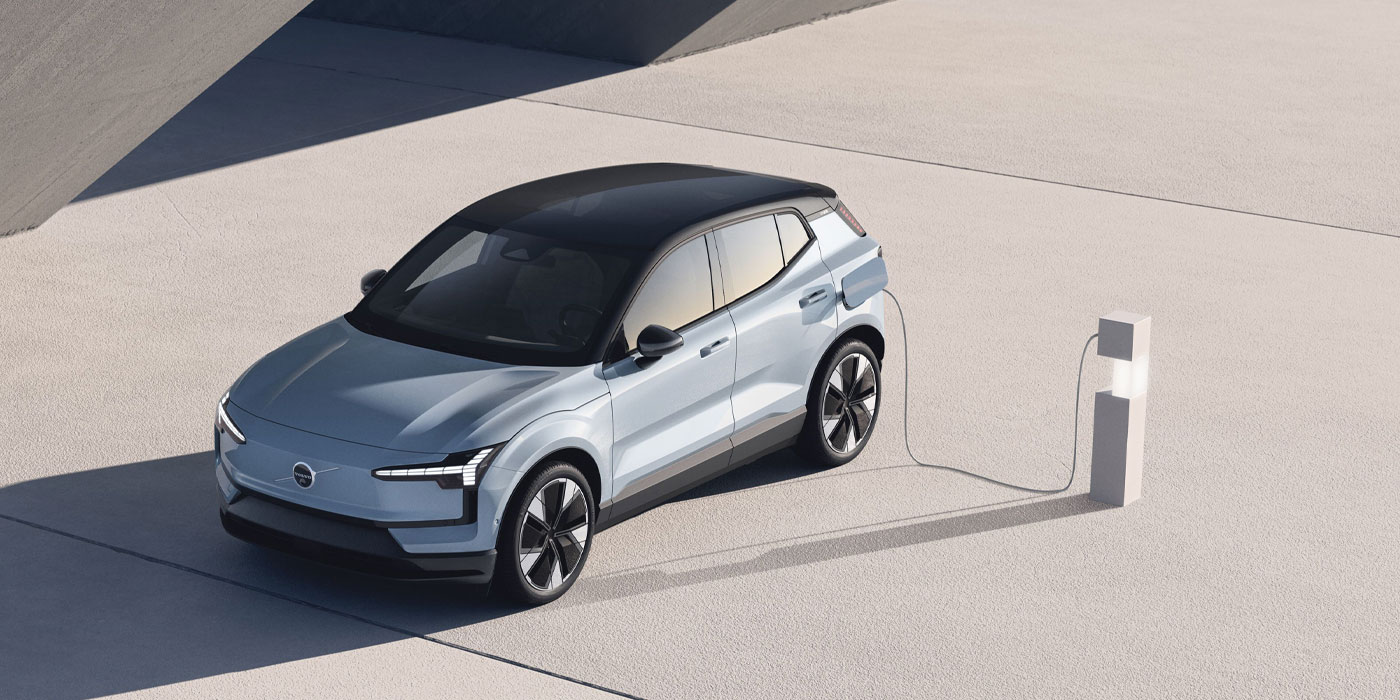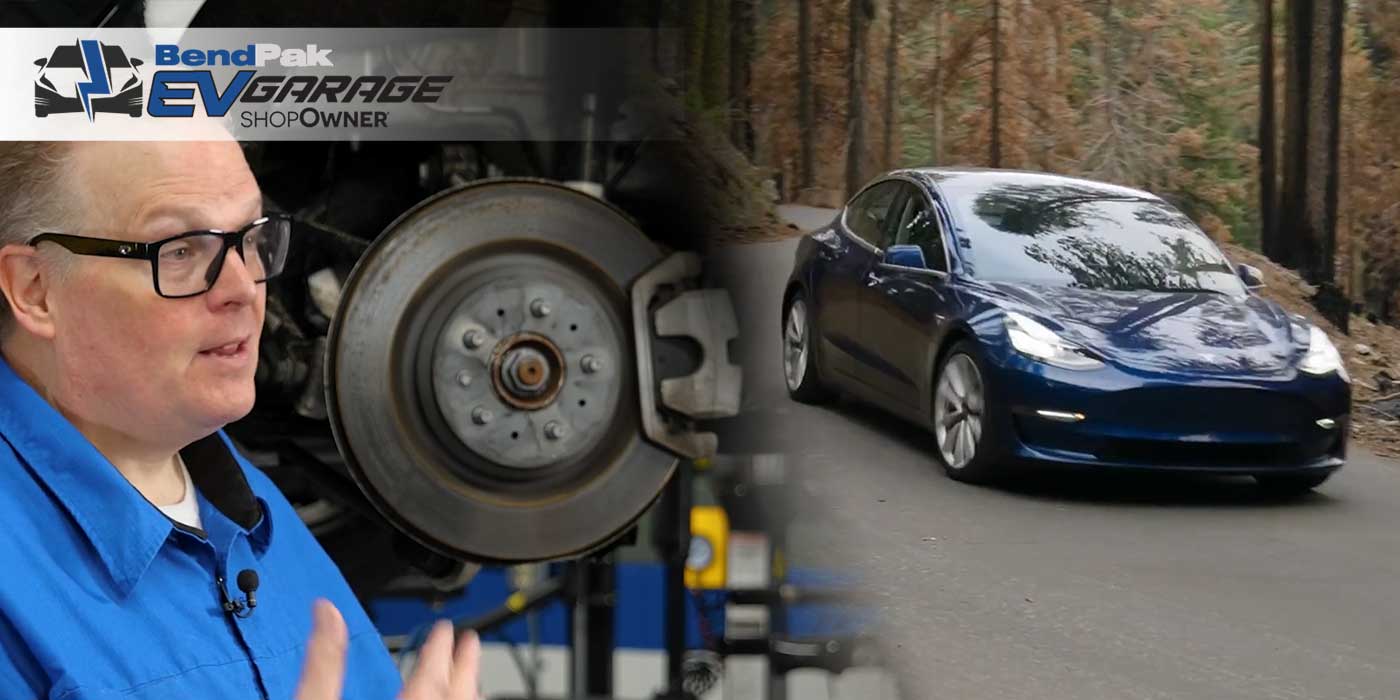Car dealers know that being pro-sustainability is good for business, but increasing sustainability efforts in the showroom doesn’t have to be just about what powertrain you’re selling. Instead of pushing EV sales, some dealers have found success with their sustainable-conscious clientele by promising to offset the carbon emissions offset by the vehicle being sold – no matter what energy source the vehicle uses to move.
“Our partners in automotive do the drive carbon neutral program. So, essentially, what we’re looking to do is obviously offset carbon emissions, and that’s by planting 75 trees per vehicle that they sell, or for enrollment that they get in the program,” says Matt Kallstrom, founder and CEO of the Carbon Offset Company. “Why 75 trees? When you take the averages of how far someone drives in a year, how many years someone owns their vehicle, and the average miles per gallon that a vehicle has, that completely offsets the entire ownership of the vehicle. So in a sense, it’s like the dealer’s cars aren’t even hitting the road from an emission standpoint.”
On this episode of The Amped EV Podcast, Kallstrom explains how carbon offsetting works, why he believes car dealers are the perfect partners to help plant trees and how his mission connects with EV drivers.
Want more of The Amped EV Podcast? Click here.
Here’s a transcript of the show:
David Sickels: Hello and welcome back to the Amped EV Podcast. My name is David. I am the editor for The Buzz.
Brian Ankney: And I’m Brian Ankney from AutoSuccess.
David Sickels: And today we are joined by a very special in-studio guest. It is Matt Kallstrom. He is the founder and CEO of the Carbon Offset Company. Matt, thank you for joining us.
Matt Kallstrom: Thank you so much, David. I’m amped up to be here.
David Sickels: Very nice. I’m amped too. So you came in from Oregon today. Tell us a little bit about yourself and about your company. What are you doing?
Matt Kallstrom: Yeah, so essentially the way to think about it is I plant a lot of trees. That’s the nutshell of my company. Basically, what we try to do is align businesses with the planet. We believe that there’s a huge amount of power and influence that business leaders can have on the world in shaping decisions and courses of action. And so we try to empower those business leaders to take those courses of action. I think inherently people are usually wanting to do the right things, but it’s either difficult or expensive. So we try to eliminate some of those barriers and get them to do the right things. So that’s what we do.
David Sickels: So give me an example. So I would go and buy a car and how does the cycle kind of work?
Matt Kallstrom: Yeah, so how the cycle works is our partners in automotive do the drive carbon neutral program. So essentially, what we’re looking to do is obviously offset carbon emissions, and that’s by planting 75 trees per vehicle that they sell, or for enrollment that they get in the program. And why 75 trees? When you take the averages of how far someone drives in a year, how many years someone owns their vehicle, and the average miles per gallon that a vehicle has, that completely offsets the entire ownership of the vehicle. So in a sense, it’s like the dealer’s cars aren’t even hitting the road from an emission standpoint.
David Sickels: Very, very interesting. How’d you figure that out? How’d you figure out those numbers?
Matt Kallstrom: Well, the numbers were backed by research through our partners. So the National Forest Foundation found out how much a tree on average sequesters carbon in its life span. There’s a lot of information out there on how many years someone owns a vehicle, and then the EPA says how many miles per gallon does the average vehicle has.
David Sickels: Very cool. So tell me, you’re mainly working with car dealers, is that correct?
Matt Kallstrom: Yeah, that’s our biggest vertical by far. We do work with some other ones, aviation, we’re getting into a little bit. But automotive by far is the biggest.
David Sickels: And how did you determine that that was going to be the best route for you to go to plant the most trees or be the most sustainable, or what was your mindset there?
Matt Kallstrom: So it’s kind of a funny story how I fell into it. I definitely fell into it. It came off of a failure of another company, actually. I used to make renewable products, water bottles, tote bags, things that would replace single-use products, and I’d plant a tree per product I would sell. However, the problem was I had no idea how to do B2C business, so I didn’t sell any of them. Yeah. So obviously, a problem when you’re in business-
David Sickels: If you still got them in stock, I’ll buy one.
Matt Kallstrom: I actually have a ton in stock, and you don’t need to buy it, I can give it to you. But I’m trying to get rid of them. I have hundreds of tote bags that have no right being in my closet, but I was invited to be an eco-friendly or a judge and a sponsor at Eco-Friendly Beauty Pageant in Omaha, Nebraska.
David Sickels: That’s something. Okay.
Matt Kallstrom: Yeah. And it was kind of the make or break of if that company was going to work and we handed out all the contestants, all of our stuff for free, and we’re hoping that they would blow it up. But unfortunately, they didn’t. And so we were pretty obviously upset about that. It was the break of the company, so we’re like, “It’s not going to work.” So we’re kind of sitting back and we’re like, “Wow, what can we do? What can we do?” And we talked to the hairstylist and his name was James, and he goes, “God, you guys really inspired me. I want to do something with you guys. Can I plant a tree actually per haircut I give?” He asked us that. And I was like, “Well, James, I’ve never would deny anyone making a difference with us, of course.”
All of a sudden on the way home, then the next day we’re in the heaviest traffic and we’re just in this traffic jam in a standstill. And I’m just like, “Wow, look at all these cars.” It’s just kind of a funny moment where it kind of clicked and I was like, “Look at all these cars just sitting here and all these emissions are just escaping and no one’s even going anywhere.” We’re just stuck on the road. And obviously, the other side of the highway is super busy too and started doing a lot of research and finding out, and no surprise, transportation has one of the leading contributors to CO2 emissions each year, and there was nothing anybody was doing about it.
So I saw that as a huge opportunity to make a difference in the world and saw a place of value potentially that could help dealers be able to offer customers something that has never been around before. So that was one thing to the next.
David Sickels: It’s a heck of a story.
Matt Kallstrom: Yeah. Thanks. Appreciate it.
Brian Ankney: Well, when you do engage a dealer, how does using your service help them to differentiate themselves within their community?
Matt Kallstrom: Yeah, glad you asked that, Brian. So one thing is no one else is doing this. So there’s no dealers out there that are offsetting their carbon emissions from a dealership level. The OEMs are starting to look into that from an OEM level, but it doesn’t trickle down and it’s not the people that are purchasing the vehicles offsetting those emissions through that course. So essentially, one is, they’ll be the only dealer in town offsetting their emissions. Two, obviously it goes way beyond that. So what we like to say is plant trees is obviously it’s beautiful to plant out forest, it cleans the air. That’s what comes to people’s minds. But it’s so much more holistic than that. We’re really rebuilding ecosystems. Animals have a place to go and live and thrive again. Water cycles get restored, rain or water quality, soil quality, crop yields all improve.
And we help out these areas holistically. So that’s another thing they can show is saying, “Hey, you know, let’s take…” I’m from Wisconsin, that’s where the company is from. Let’s take Wisconsin for example. We’re big in hunting and fishing. That’s a huge, honestly, everybody in Wisconsin pretty much. And a guy comes into the dealership, say it’s a Ford dealership, and he gets his F-150 truck and he’s going to go take a hunting. Now he’s helping rehabilitate and improve those places of passion that he has through that purchase of the vehicle. So another way the dealer gets to differentiate. Other things are we coordinate volunteer planting events for those dealers if they would like. So we can help them roll up their sleeves, get their hands dirty, connected as a volunteer event with their customers. That’s another piece.
We donate trees to schools nearby their areas and educate those children on the importance of working with the planet. So we do that on the dealer’s behalf. And then we also give them tree kits to give their customers if they would like to take one home and plant one around their property or at some other place, they get to go home and have that experience as well.
Brian Ankney: Now, at the dealership level, I mean when customers come in, how does a dealer let the customer know that… I mean, I imagine they see it in a commercial, then they know. But if I just walked into this showroom, how does a dealer let me know that if I purchase a vehicle, you’re going to plant the trees to offset my carbon?
Matt Kallstrom: Good question. So we handle that as well. So we handle in-store marketing materials. So we do point of displays, hanging banners, standing banners, things for the digital display boards, table toppers. So if you have a lull, maybe in your finance process, you can see about the program, take out your phone QR code to see how many trees that dealer’s planted. So you’re going to know when you walk in the dealership that they’re doing something like this and you’re going to get to learn a little bit more about how they’re helping the environment around their area.
Brian Ankney: That’s neat. So you’re keeping track of how many trees each dealership has planted. Do you also provide them with any photographs or images of where their trees are going so they can share that? It seems like that’d be great for a newsletter or a website.
Matt Kallstrom: Yeah.
Brian Ankney: Are you sharing that with them?
Matt Kallstrom: Yeah, we are. So that’s another piece. We do social media and online to help them share that message. And it’s actually a monthly evolving kind of process. So every month the dealers are reporting to us, “Hey, we have this many trees we basically want to plant.” We get those planted, and then we give them updates on those sites then. So that’s the process. So once they get planted, the money goes into action, we get to then showcase, “Hey, here’s where your money went towards, here’s all the ecosystems that you’re helping out.” And we get to show them, and then they get to show their customers as well.
Brian Ankney: Wow. You mentioned schools and some other local things. I mean, are dealers creating new tree spaces that like at parks, for instance, are they able to say I’d like to contact my city and they just had this new park, there’s no trees there. I mean, are you able to help them to fill a park with trees? Is that what you’re talking about?
Matt Kallstrom: Sometimes. So it’s a lot of variables behind it. So sometimes it’s in like a national forest, that’ll be a larger scale project. Sometimes it’s like a local park area, like you said, that just needs some forestation. It’s kind of a empty park area. And then some of our dealers are doing really kind of above and beyond, which is stuff that we didn’t even tell them to do that, I love seeing them take that initiative. We have a dealer out of Albuquerque, New Mexico, that went to North New Mexico, and there’s a forest fire there last fall. They cleaned all of the rubble essentially to make way for planting. They’re about to do this weekend.
So they took 50 to 100 athletes, I think, on buses, shuttled them up there, and these big football players just moved all this stuff and made clearings. And now they’re going back up this weekend. The plant we shipped them about 2,500 saplings. So they’re going to plant that this weekend.
Brian Ankney: Oh wow. That’s incredible.
Matt Kallstrom: Thank you.
David Sickels: Are you seeing any sort of levels of success? And I guess what I mean is people buying EVs. So we’re on an EV podcast here. So are you seeing EV dealers or maybe EV manufacturers really gravitating toward this project that you’re offering them? Because sustainability is such a front-of-mind idea when it comes to electric vehicles?
Matt Kallstrom: Yeah, it’s kind of a double-edged sword a little bit because the individuals that want to buy EVs typically care more about this. EVs, obviously, being a step in the right direction. However, they’re not quite perfect yet. So what we are doing is trying to bridge that gap in that transition. And a lot of dealers right now obviously are very aware that we’re just not there yet. From an infrastructure standpoint, still takes a lot, actually, more CO2 is created during the manufacturing of the electric vehicle. They’re being recharged on non-renewable energy, kind of the battery situation. What do you do with it afterwards? So it’s not completely tightened up yet. It’s a step in the right direction, but it’s not there.
So what we try to do is smooth that transition. This is something we can do now. This is something we can literally do without waiting for 10 years of advancement or however long that would take. So let’s make that impact now. We obviously see we have a desire and a drive to do this, so we helped make that push. We actually just partnered with a new EV manufacturer, they were starting in Mexico called Aura, and they really took this to heart. Taking that stand to say, “We are trying to make everybody more sustainable.” This is a right move in the right direction, but we’re not quite there yet. So this is what we’re going to do while we keep making advancements in our technology.
David Sickels: Interesting. So I understand how the partnership with a dealer might work. How might your partnership with a company like Aura work?
Matt Kallstrom: So the difference is when it’s a dealer, it’s when they sell the vehicle with Aura. It’s when they make the vehicle. So every single vehicle that they manufacture, they plant trees with us to offset those emissions.
David Sickels: Wow. That’s really cool. That’s really cool. Whether it’s a dealer or a manufacturer, do they have any say as far as where they want that tree to go? I mean, I know Brian had mentioned, can you throw it in a park? But if they have a specific like, “Hey, I want to repopulate this forest, I want to throw all the trees over there.” Can you do that for them? Can you help them do that?
Matt Kallstrom: To a degree. So we always focus on the areas that are nearest to our partners. So we have a dealership in Ohio, we’re going to try to get a planting site as close as Ohio as possible.
David Sickels: Very cool.
Matt Kallstrom: In Aura’s case, they’re in Mexico, which was really important that they actually restored ecosystems in Mexico, which I found surprising how much care actually was in sustainability in Mexico. They really have a desire for it. So we actually started new sites based on that partnership. And we’re doing an assortment of things. As I said, I like to always shine a light on the holistic planning forest can be. For instance, one of the big things is the Monarch butterfly migration we were focused on, turtle rehabilitation and different watershed restorations and helping out these systems all over Mexico to keep that impact. As a dealer, they always want to keep it more local. But yeah, wherever the dealer is located, we get as much impact on as close as them as possible.
David Sickels: That is really, really cool.
Matt Kallstrom: Thank you.
David Sickels: So from a business perspective then, if I’m a dealer, am I able to list my partnership with you as part of my ESG goals? Maybe that make more sense for a manufacturer, I’m not sure. But when it comes tax season or you’re trying to let people know what you’re doing, you’ve got these ESG goals, you’re trying to offset certain amounts of carbon, how can partnering with you help them do that?
Matt Kallstrom: Yeah, certainly. All of our partners for sure are very proud of that partnership. All our materials are co-branded, so they get that, they feel that, hey, they’re attached to an organization that is doing this. And it does help them make that statement ESG. So in different ways, so one ESG, we don’t have a regulatory carbon credit market right now in the United States. So it doesn’t really account for that just because it’s all voluntary at this point, especially from the dealership level that we’re working with. But we do help them with the same type of thing. And what I mean by that is you’re still making that impact as a dealership and you’re still getting all that benefit to be able to say you’re making that impact. It’s just not a regulatory market quite yet. But one thing I was going to mention that they do, if you’re a Subaru dealer, actually we count as the community outreach pillar for the eco-certified Subaru dealership program.
David Sickels: So, what does that entail? It’s really cool.
Matt Kallstrom: So, if you’re a Subaru dealer, you can go above and beyond in different… they have a whole kind of certifications. There are like five different realms you have to hit on. Community outreach is being one of them. So that’s where it comes to planting locally, doing those volunteer events. We’ve actually been certified as a… we count as that pillar. So, if you’re going to be certified eco-friendly Subaru dealer, we count as that pillar.
Brian Ankney: Nice. Well, I want to ask you, what’s next? It’s got a lot going on, but what’s next? What’s your holy grail? What’s the goal that you see out there that you really want to achieve with all these things you’re doing to offset carbon?
Matt Kallstrom: So, I think, really what I want to keep doing is keep being more holistic. So offsetting carbon is a dire need of ours, and it is our main and only focus really right now. But I want to keep expanding. Our whole goal as a company, our mission is make the most positive change in the world as possible. It’s very simple, but it guides our decisions on what we do. And to be able to do that, I hope there’s going to be an evolution to the business where we do more than just plant trees where we are cleaning plastic out of the ocean, where we’re restoring animal habitats very specifically, maybe even feeding hungry people it kind of the end. The amount of good we can do in the different ways we can do it, are endless.
So, I want to continue to grow a holistic change and broaden the ways I can make an impact on the planet. And help businesses attach to things that they’re concerned about, things that they’re passionate about. Maybe in the automotive space, it’s perfect with the trees because the emissions are the big thing we need to help the dealers with. But maybe another business is if we expand in other businesses, maybe they’re more passionate about something else. It’s more relatable. We can help them, enable them to make that positive change in the world.
David Sickels: Very cool. Yeah, that’s going to make a huge difference in the lives of so many dealers. I mean, they can align with that goal so well, and just having their customers know that they’re doing that. I mean, I can’t imagine the difference that it could possibly make.
Brian Ankney: Yeah. Subaru is a company that has always had programs like that, but they’re one of the only ones that that’s really made it mainstream for their dealers. And so you give every dealer the opportunity to do this.
Matt Kallstrom: Yeah, a 100% correct. And that’s one of the awesome things to hear back from our dealers is, I always knew it’d make the customer feel good, but I didn’t imagine the amount of positive feedback we’ve had that it makes their staff feel good … Makes them feel fulfilled, knowing that if you’re a salesman, selling a lot of cars and every single car you’re selling is plant 75 trees and you’re with that dealership for years, you could make a huge difference in the world doing your job, no differently than you normally do. You’re just selling cars. But now you’re making a huge impact plant forest, and it gives people a lot of fulfillment and it brings another extra exciting thing for the staff to rally around.
Brian Ankney: I have one more question.
Matt Kallstrom: Sure.
Brian Ankney: You talked about forests. Let’s talk about the scale. How many trees have you planted as of now?
Matt Kallstrom: So as of now, we have just planted over 1.9 million trees.
David Sickels: 1.9 million.
Matt Kallstrom: Yup.
Brian Ankney: Wow.
Matt Kallstrom: And we are going to pass 2 million trees this month.
Brian Ankney: Wow.
David Sickels: So, I mean, you’re not messing around here. This is, holy cow, almost 2 million trees. Incredible.
Matt Kallstrom: Yeah.
David Sickels: Congratulations. That’s amazing.
Matt Kallstrom: Thank you so much. Yeah. This month will pass 2 million for sure. And I tell all my dealer partners, it’s like, “This isn’t something where you plant five trees in the front yard, and you want to pat in the back.” This is making enormous change. The average dealer can plant 70,000 trees per year through our program, and that’s the average dealer. So we have ones that are doing a lot more than that, and it’s making a huge change. So it’s cool to see to come to life.
Brian Ankney: Wow. I mean, that’s impactful in a commercial. I mean, if you’re David Sickles Ford, we planted 70,000 trees last year, come be part of the change. I mean, that’s a message that people can get behind.
David Sickels: 100%. Yeah.
Brian Ankney: That’s a brand.
David Sickels: That’d make a difference for me.
Matt Kallstrom: Yeah. More and more consumers are thinking about that. A third of consumers today think about the environment when they purchase a vehicle. And that’s in the totality of all generations. When you think of Generation Z and millennials, it’s only increasing and more increasing. So it’s like, “Yeah, they want it.” It’s a new need and it’s something that is the right thing to do, I believe. And it’s an easy way to do it. So that’s kind of what we offer.
Brian Ankney: That’s awesome. Well, is there anything else you’d like to share with our audience before we go?
Matt Kallstrom: Well, I appreciate everybody listening, and if you’re a dealer, I would love to chat with you, obviously. But I do have some things for you guys. All right. I brought this some trees here.
David Sickels: I saw you bring that in. I didn’t know it was in there. This is fantastic. That’s a pine tree?
Matt Kallstrom: Very lightweight tree. Yeah, it’s a Ponderosa pine.
David Sickels: This is cool.
Matt Kallstrom: So this is just a sample, but our dealers get the same tree kit. So this is if you come into Matt Kallstrom dealership, you buy a vehicle, here’s your tree. If you would like it, take it home plant it. It gives you a little instructions on how to do it in there. And then you can have your dealership tree in your backyard.
David Sickels: That’s so cool. Matt, thank you for this gift.
Matt Kallstrom: Thanks for having me on the show, guys.
David Sickels: Absolutely, absolutely. You’re welcome anytime. This is really cool. And for an EV focus podcast, when I first started talking with you, back when we first spoke, I’m like, “Man, I don’t know what the angle is for EVs,” but it’s so clear. I mean, the sustainability thing, sometimes it’s not about electrification, sometimes it’s just about being more sustainable and you are achieving that really well, obviously 1.9 million trees. That’s insane. Thank you for being on the show. I really appreciate it. And thank you all for watching. We’ll catch you next time. Take care.






